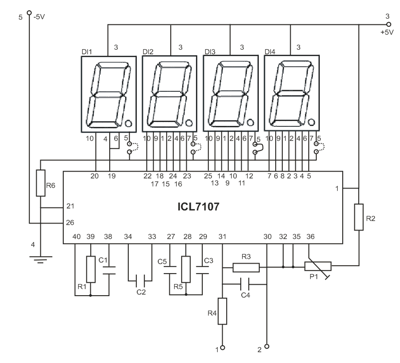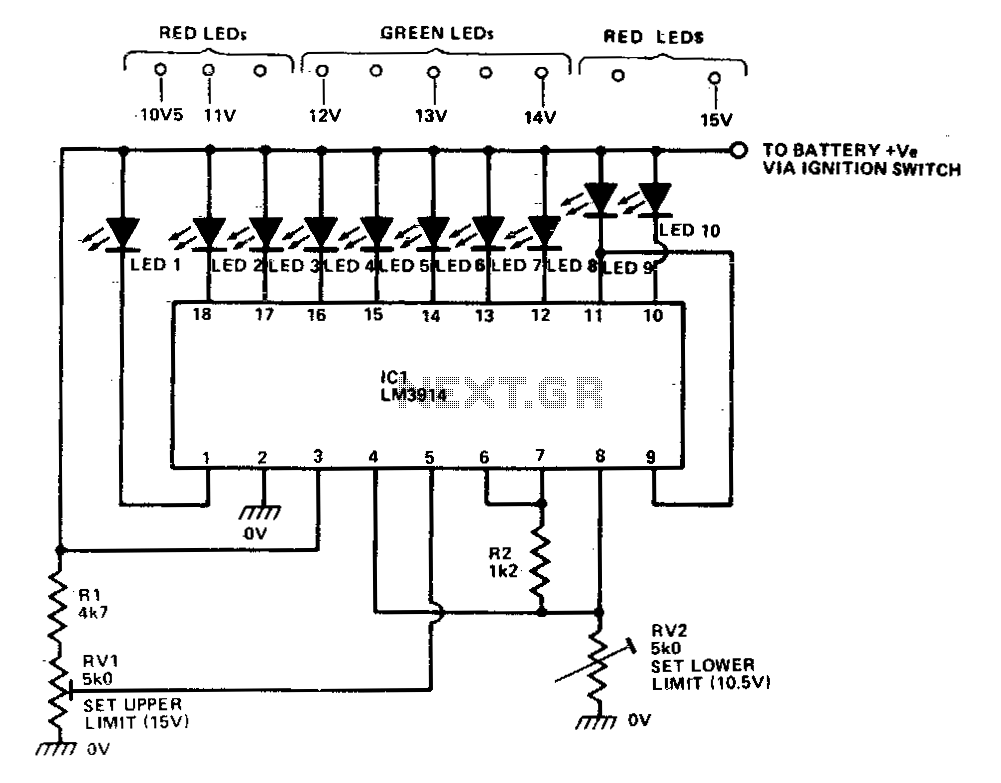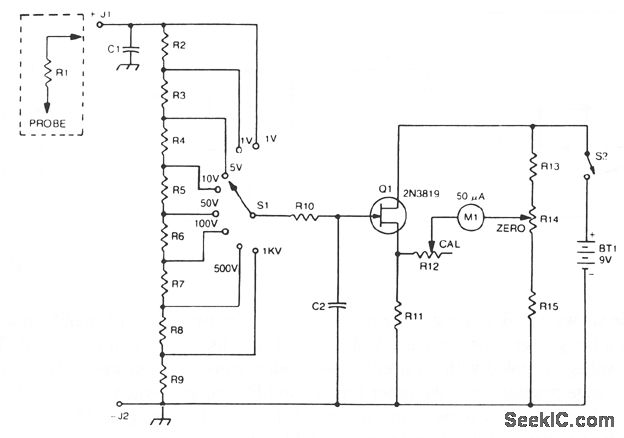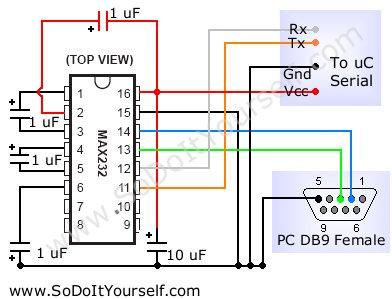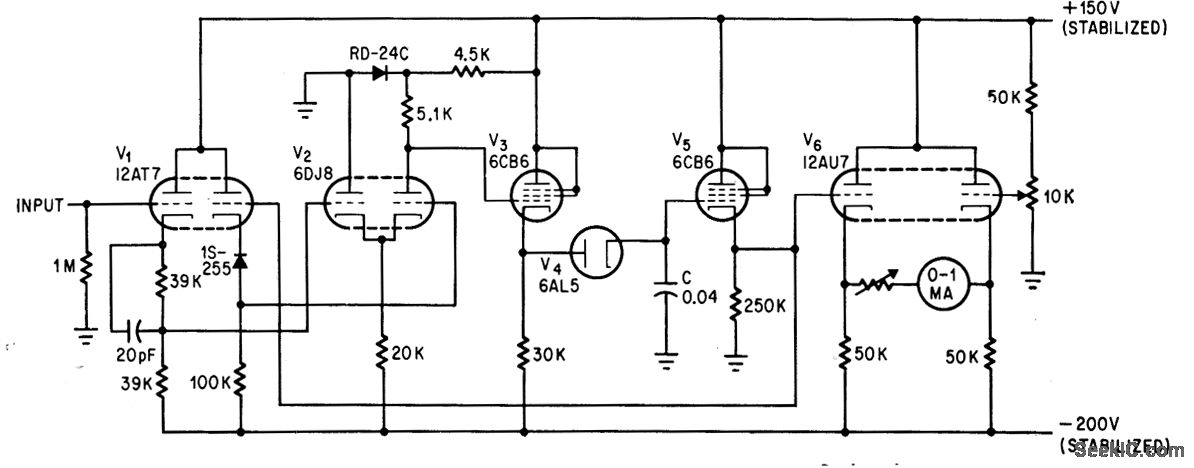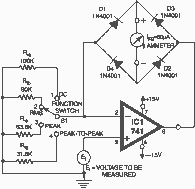
Tonal Electrostatic Voltmeter Device

A highly effective method for providing continuous and direct indication of electrostatic voltmeter (ESV) readings, even in large lecture halls, is to integrate this instrument with a tonal voltmeter (TVM). The TVM emits an audible tone of constant amplitude, with the frequency corresponding to the voltage reading. To integrate the TVM with the ESV, the ESV must feature a bipolar analog output. An arbitrary intermediate frequency within the audio range is selected as the zero reference for uncharged objects. An upward frequency shift of the audible tone signals positive charge, while a downward shift indicates negative charge. The magnitude of the positive or negative frequency shift correlates with the strength of the respective charge detected. Practical experience with the tonal electrostatic voltmeter (TESV) during numerous lecture presentations has shown that audiences can quickly learn to differentiate between positive and negative charges. The TESV comprises a commercially available hand-held electrostatic voltmeter and a self-contained tonal voltmeter module. Many ESV instruments, including the one referenced, typically feature ½2 volt analog output jacks at the base. Two jacks mounted on the top of the tonal voltmeter module connect directly to these outputs, creating a compact system for electrostatic charge detection. The TVM module includes a volume control knob and an on/off switch positioned on opposite sides, with the audio speaker opening located at the front. A practical method for utilizing the TESV involves mounting the unit on a short camera tripod, facilitating quick and repeatable charge measurements while allowing the demonstrator to use their hands for other tasks. This arrangement is particularly useful for demonstrating various tribocharging phenomena, as well as in demonstrations involving coaxial shielding, field collapse apparatuses, and powder charging. The TVM circuit, as referenced in Bender (1996), utilizes the ½2 volt analog output from the hand-held ESV (along with a DC offset) as its input. The accompanying circuit schematic illustrates Bender's original TVM circuit, integrated with a resistive voltage divider network that enables tonal indication for both positive and negative polarity charges. A miniature loudspeaker driven by a single-stage audio amplifier provides sufficient volume for use in a lecture hall. The tonal voltmeter module depicted in the photograph was assembled by L. Begy from the Electrical Engineering Department at the University of Rochester, who also prepared the circuit schematic.
The integration of a tonal voltmeter with an electrostatic voltmeter significantly enhances the user experience in educational settings. By providing auditory feedback that corresponds to the electrostatic charge detected, the system allows for immediate recognition of charge polarity and magnitude, which is crucial for effective demonstrations. The choice of an intermediate frequency as a zero reference facilitates intuitive understanding of charge states, making the system accessible to audiences without prior knowledge of electrostatics.
The circuit design incorporates essential components such as the resistive voltage divider, which ensures the output signal is appropriately scaled for the tonal voltmeter. This configuration allows for both positive and negative charges to be represented audibly, thereby broadening the educational applications of the system. The single-stage audio amplifier and miniature loudspeaker are selected to ensure that the output is loud enough to be heard in large lecture halls, making the system suitable for various demonstration scenarios.
When mounted on a tripod, the TESV system becomes highly versatile, allowing educators to engage with the audience while conducting experiments. This setup not only enhances the clarity of the demonstrations but also encourages interactive learning, as students can observe the effects of different tribocharging phenomena in real-time. The compact design of the system, combined with its ease of use, makes it an invaluable tool for teaching concepts related to electrostatics and charge interactions in a practical and engaging manner.An excellent way to provide continuous and direct indication of ESV readings in even a large lecture hall is to combine this instrument with a tonal voltmeter (TVM). The TVM puts out an audible tone of constant amplitude, with the frequency related to the voltage reading.
To integrate the TSV with the ESV, the ESV must have bipolar analog output. Some intermediate frequency in the middle of the audio range is chosen arbitrarily as the zero reference for uncharged objects. Then, an upward frequency shift of the audible tone indicates positive charge while a downward shift indicates negative charge.
The larger the positive or negative frequency shift, the larger the magnitude of the positive or negative charge being detected. Experience with the TESV in many lecture presentations indicates that even a large audience is quickly trained to distinguish between positive and negative charges.
The TESV shown above consists of a commercially made, hand-held electrostatic voltmeter and a self-contained tonal voltmeter module. Many ESV instruments, including the one shown, come standard with ½2 volt analog output plugs on the bottom.
Two jacks mounted to the top of the tonal voltmeter module plug directly into these plugs to make a compact system for detecting electrostatic charge. A volume-control knob and on/off switch are evident on opposite sides of the TVM module and the audio speaker opening is on the front.
A very convenient way to use the TESV is with the unit mounted on a short camera tripod. The tripod makes it easy to measure charge quickly and repeatably, and it frees a demonstrator`s hands for other tasks. For example, a great variety of tribocharging phenomena can be demonstrated easily using this arrangement.
The tripod-mounted TESV is also convenient in demonstrations such as the coaxial shielding and field collapse apparatuses and also the powder charging demonstration. The TVM circuit [Bender, 1996] uses the ½2 volt analog output from the hand-held ESV (plus a DC offset) as input.
The circuit schematic provided below shows Bender`s original TVM circuit integrated with the resistive voltage divider network needed to permit tonal indication of both positive and negative polarity charges. A miniature loudspeaker driven by a single-stage audio amplifier provides adequate volume for use in a lecture hall.
The tonal voltmeter module shown in the photograph at the top of this page was assembled by L. Begy of the Electrical Engineering Department at the University of Rochester. He also prepared the circuit schematic shown. 🔗 External reference
The integration of a tonal voltmeter with an electrostatic voltmeter significantly enhances the user experience in educational settings. By providing auditory feedback that corresponds to the electrostatic charge detected, the system allows for immediate recognition of charge polarity and magnitude, which is crucial for effective demonstrations. The choice of an intermediate frequency as a zero reference facilitates intuitive understanding of charge states, making the system accessible to audiences without prior knowledge of electrostatics.
The circuit design incorporates essential components such as the resistive voltage divider, which ensures the output signal is appropriately scaled for the tonal voltmeter. This configuration allows for both positive and negative charges to be represented audibly, thereby broadening the educational applications of the system. The single-stage audio amplifier and miniature loudspeaker are selected to ensure that the output is loud enough to be heard in large lecture halls, making the system suitable for various demonstration scenarios.
When mounted on a tripod, the TESV system becomes highly versatile, allowing educators to engage with the audience while conducting experiments. This setup not only enhances the clarity of the demonstrations but also encourages interactive learning, as students can observe the effects of different tribocharging phenomena in real-time. The compact design of the system, combined with its ease of use, makes it an invaluable tool for teaching concepts related to electrostatics and charge interactions in a practical and engaging manner.An excellent way to provide continuous and direct indication of ESV readings in even a large lecture hall is to combine this instrument with a tonal voltmeter (TVM). The TVM puts out an audible tone of constant amplitude, with the frequency related to the voltage reading.
To integrate the TSV with the ESV, the ESV must have bipolar analog output. Some intermediate frequency in the middle of the audio range is chosen arbitrarily as the zero reference for uncharged objects. Then, an upward frequency shift of the audible tone indicates positive charge while a downward shift indicates negative charge.
The larger the positive or negative frequency shift, the larger the magnitude of the positive or negative charge being detected. Experience with the TESV in many lecture presentations indicates that even a large audience is quickly trained to distinguish between positive and negative charges.
The TESV shown above consists of a commercially made, hand-held electrostatic voltmeter and a self-contained tonal voltmeter module. Many ESV instruments, including the one shown, come standard with ½2 volt analog output plugs on the bottom.
Two jacks mounted to the top of the tonal voltmeter module plug directly into these plugs to make a compact system for detecting electrostatic charge. A volume-control knob and on/off switch are evident on opposite sides of the TVM module and the audio speaker opening is on the front.
A very convenient way to use the TESV is with the unit mounted on a short camera tripod. The tripod makes it easy to measure charge quickly and repeatably, and it frees a demonstrator`s hands for other tasks. For example, a great variety of tribocharging phenomena can be demonstrated easily using this arrangement.
The tripod-mounted TESV is also convenient in demonstrations such as the coaxial shielding and field collapse apparatuses and also the powder charging demonstration. The TVM circuit [Bender, 1996] uses the ½2 volt analog output from the hand-held ESV (plus a DC offset) as input.
The circuit schematic provided below shows Bender`s original TVM circuit integrated with the resistive voltage divider network needed to permit tonal indication of both positive and negative polarity charges. A miniature loudspeaker driven by a single-stage audio amplifier provides adequate volume for use in a lecture hall.
The tonal voltmeter module shown in the photograph at the top of this page was assembled by L. Begy of the Electrical Engineering Department at the University of Rochester. He also prepared the circuit schematic shown. 🔗 External reference
